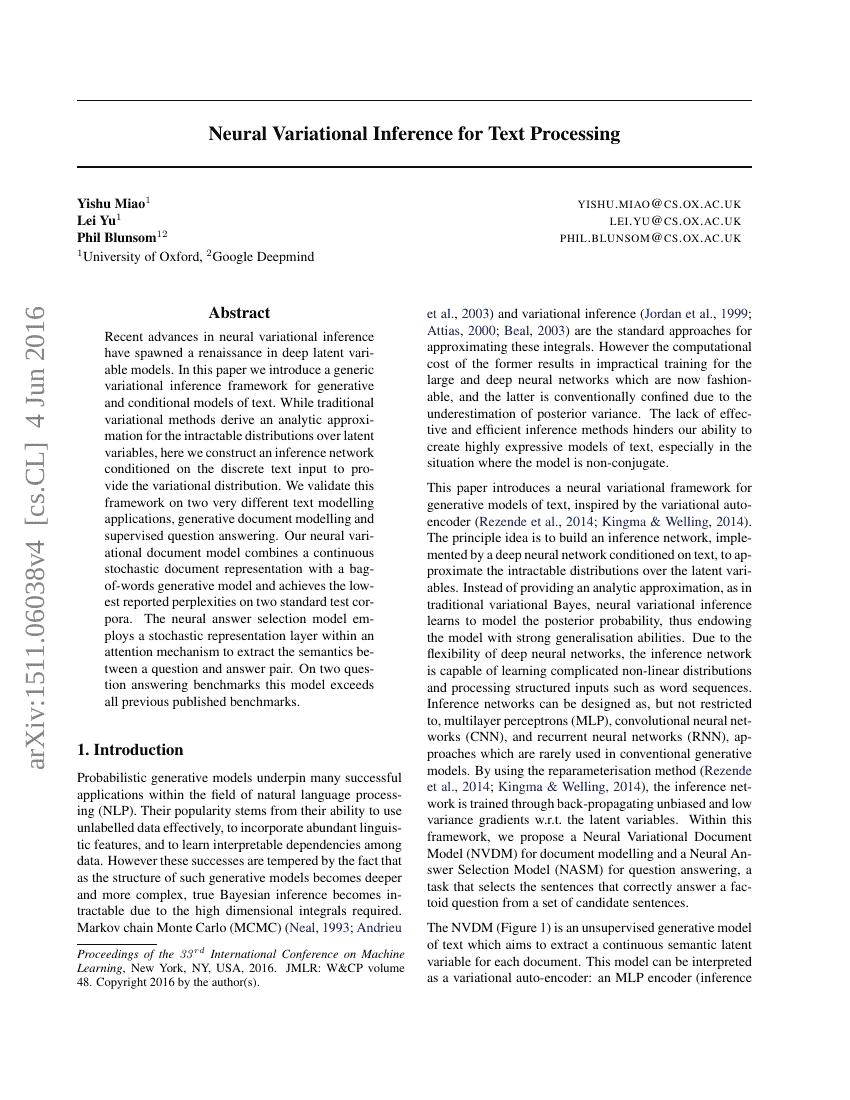Command Palette
Search for a command to run...
Yishu Miao; Lei Yu; Phil Blunsom

Abstract
Recent advances in neural variational inference have spawned a renaissance in deep latent variable models. In this paper we introduce a generic variational inference framework for generative and conditional models of text. While traditional variational methods derive an analytic approximation for the intractable distributions over latent variables, here we construct an inference network conditioned on the discrete text input to provide the variational distribution. We validate this framework on two very different text modelling applications, generative document modelling and supervised question answering. Our neural variational document model combines a continuous stochastic document representation with a bag-of-words generative model and achieves the lowest reported perplexities on two standard test corpora. The neural answer selection model employs a stochastic representation layer within an attention mechanism to extract the semantics between a question and answer pair. On two question answering benchmarks this model exceeds all previous published benchmarks.
Code Repositories
Benchmarks
| Benchmark | Methodology | Metrics |
|---|---|---|
| question-answering-on-qasent | Attentive LSTM | MAP: 0.7339 MRR: 0.8117 |
| question-answering-on-qasent | LSTM (lexical overlap + dist output) | MAP: 0.7228 MRR: 0.7986 |
| question-answering-on-qasent | LSTM | MAP: 0.6436 MRR: 0.7235 |
| question-answering-on-wikiqa | LSTM (lexical overlap + dist output) | MAP: 0.682 MRR: 0.6988 |
| question-answering-on-wikiqa | LSTM | MAP: 0.6552 MRR: 0.6747 |
| question-answering-on-wikiqa | Attentive LSTM | MAP: 0.6886 MRR: 0.7069 |
| topic-models-on-20-newsgroups | NVDM | Test perplexity: 836 |
Build AI with AI
From idea to launch — accelerate your AI development with free AI co-coding, out-of-the-box environment and best price of GPUs.